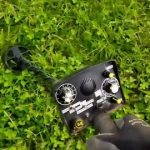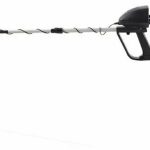Gold hunting tools are essential for successful prospectors to find and extract gold from the earth. From metal detectors to shovels and sluice boxes, having the right equipment can make all the difference in a successful gold hunting expedition. In this article, we will explore some of the essential gold hunting tools that every prospector should have in their arsenal. Whether you are a seasoned veteran or a novice in the world of gold hunting, having the right tools can greatly increase your chances of striking it rich.
Essential gold hunting tools for successful prospectors include:
1. Metal Detector: A high-quality metal detector is essential for locating gold nuggets and veins in the ground.
2. Gold Pan: A gold pan is used to separate gold from sediment and is a crucial tool for panning for gold in rivers and streams.
3. Sluice Box: A sluice box is used to efficiently process larger quantities of sediment and separate out gold particles.
4. Classifier: A classifier is used to sift through sediment and separate larger rocks and debris from finer materials that may contain gold.
5. Crevice Tool: A crevice tool is used to access hard-to-reach areas, such as cracks and crevices in rock formations, where gold may be trapped.
6. Magnifying Loupe: A magnifying loupe is used to closely inspect potential gold specimens and identify their quality.
7. GPS and Maps: A GPS device and maps are useful for navigating to and from gold-bearing areas and keeping track of successful locations.
These tools are important for successful gold prospecting and can greatly increase the chances of finding valuable gold deposits.
Top 10 Essential Gold Hunting Tools You Need Now

1. Metal Detector: A high-quality metal detector is essential for finding gold nuggets and detecting small gold particles in the ground.
2. Gold Pan: A sturdy gold pan is necessary for panning for gold and separating it from other materials.
3. Sluice Box: A sluice box helps to process larger amounts of material and capture more gold particles by using the natural flow of water.
4. Gold Classifier: A classifier helps to remove larger rocks and debris from the material being processed, making it easier to find and collect gold.
5. Crevice Tool: This tool is essential for reaching and extracting gold from hard-to-reach cracks and crevices in rocks and soil.
6. Sniping Tools: Tools such as a sniping bottle and sniping scope can help gold hunters locate and extract gold from difficult-to-reach spots.
7. Gold-Testing Kit: A gold-testing kit allows you to quickly and accurately determine the authenticity of gold you find in the field.
8. GPS Device: A GPS device is crucial for marking and recording the locations where gold is found, helping you to keep track of productive sites.
9. Panning Gloves: Durable gloves are essential for protecting your hands while panning for gold and handling rough materials.
10. Backpack: A comfortable and durable backpack is necessary for carrying all of your gold hunting tools and supplies while exploring remote areas.
The Ultimate Guide to Gold Hunting Tools and Equipment

The Ultimate Guide to Gold Hunting Tools and Equipment provides a comprehensive overview of the essential tools and equipment needed for successful gold prospecting. It includes detailed information on the best metal detectors, gold pans, sluice boxes, and other gear necessary for finding and extracting gold. The guide also offers practical tips and advice on how to use each tool effectively and maximize your chances of striking gold. Whether you’re a beginner or experienced prospector, this guide is a valuable resource for anyone looking to enhance their gold hunting skills and equipment collection.
Must-Have Gold Prospecting Tools for Beginners

Some essential gold prospecting tools for beginners include a gold pan, a classifier or sieve, a snuffer bottle, a shovel, and a pick axe. A gold pan is used to swirl water and sediment to separate gold from other materials. A classifier or sieve helps to remove larger rocks and debris, allowing you to focus on smaller particles where gold may be found. A snuffer bottle is used to suck up small gold flakes and dust for safekeeping. A shovel and pick axe are necessary for digging and breaking up rocks in search of gold. Additionally, a metal detector can also be a useful tool for locating gold nuggets and deposits in the ground.
5 High-Tech Gold Detecting Tools for Modern Prospectors

1. Minelab GPZ 7000: This high-tech gold detector utilizes advanced technologies such as ZVT (Zero Voltage Transmission) and Super-D to provide superior depth and sensitivity in detecting small and large gold nuggets.
2. Fisher Gold Bug 2: Known for its high operating frequency, this gold detector is designed to specifically target small gold nuggets in highly mineralized soils, making it a popular choice for prospectors in gold-rich areas.
3. Garrett ATX: This all-terrain gold detector is built to withstand harsh environments and features advanced pulse induction technology for optimal sensitivity to small gold nuggets. It also offers multiple search modes for versatility in different prospecting scenarios.
4. Minelab SDC 2300: This compact and portable gold detector is equipped with advanced digital signal processing technology, enabling it to effectively detect gold in both shallow and deep ground.
5. White’s GMT: Utilizing a 48 kHz operating frequency, this high-tech gold detector is known for its ability to detect even the smallest gold nuggets, making it an ideal tool for prospectors searching in highly mineralized soils and gold-bearing areas.
The Best Handheld Gold Hunting Tools for Small-Scale Miners
See also: purchase metal detector
The best handheld gold hunting tools for small-scale miners include metal detectors, gold panning kits, and handheld GPS devices. Metal detectors are essential for locating metallic deposits in the ground, while gold panning kits are used to manually extract gold from riverbeds and streams. Handheld GPS devices are helpful for navigation and marking potential gold mining locations. These tools are compact, easy to carry, and essential for small-scale miners to efficiently locate and extract gold. Investing in high-quality handheld gold hunting tools can greatly improve a miner’s chances of success and increase productivity in the field.
Choosing the Right Gold Panning Tools for Success
When choosing the right gold panning tools for success, it’s essential to consider the type of prospecting you’ll be doing, the location and terrain where you’ll be panning, and your level of experience. Some essential tools to consider include a gold pan, classifier, snuffer bottle, tweezers, and a shovel or scoop. Additionally, you may want to invest in a sluice box, metal detector, or other specialized equipment depending on your specific needs. It’s also important to consider the quality and durability of the tools to ensure they can withstand the rigors of gold panning. Ultimately, choosing the right tools can significantly impact your success in finding gold.
Gold Sniping Tools: What You Need to Know
Gold sniping tools are essential for anyone interested in prospecting for gold in rivers, streams, and creeks. These tools typically include a sniping bottle, a snuffer bottle, a crevice tool, a gold pan, and a set of tweezers. The sniping bottle is used to suck up small gold flakes from the bottom of waterways, while the snuffer bottle is used to collect and store the gold. The crevice tool helps to reach into tight spaces where gold may be trapped, and the gold pan is used for the initial panning process. Lastly, the tweezers are used for precision picking and handling of gold particles. These tools are essential for effectively and efficiently extracting gold from its natural environment.
DIY Gold Mining Equipment: Building Your Own Tools
DIY Gold Mining Equipment: Building Your Own Tools is a guide that provides detailed instructions and plans for constructing your own gold mining equipment. It covers a variety of tools and equipment needed for gold mining, including sluice boxes, dredges, and drywashers. The book includes step-by-step directions, material lists, and tips for successful building. Whether you are a beginner or an experienced prospector, this book can help you save money and customize your equipment to fit your specific mining needs.
Gold Dredging Tools and Equipment for Serious Prospectors
Gold dredging tools and equipment for serious prospectors include a variety of different tools and machines designed to help extract gold from riverbeds and streams. This can include suction dredges, highbankers, sluice boxes, and specialized gold pans. Suction dredges are typically the most efficient and effective tool for gold dredging, as they can vacuum up gravel and sand from the riverbed and extract the gold using a sluice box.
Highbankers are another popular option, and consist of a combination of a sluice box and a water pump to help process larger amounts of material. Sluice boxes themselves are also essential tools for gold dredging, as they use riffles and mats to capture gold as sediment passes through.
Specialized gold pans are also important for prospectors, as they are used to manually extract gold from sediment in riverbeds. These pans are typically made from durable materials such as steel or plastic, and are designed to separate gold from other materials through swirling and shaking.
Overall, serious prospectors will want to invest in a combination of these tools and equipment to effectively extract gold from riverbeds and streams. Each tool serves a unique purpose and can be used in conjunction with others to maximize gold recovery.
The Pros and Cons of Different Gold Testing Tools
Pros and Cons of Different Gold Testing Tools:
1. Acid Test Kits:
Pros:
– Relatively inexpensive
– Can provide quick results
Cons:
– Requires a sample of the gold to be tested
– Can damage the gold being tested
2. Electronic Gold Testers:
Pros:
– Provide accurate results
– Non-destructive testing
Cons:
– Expensive
– Require batteries or power source
3. X-Ray Fluorescence (XRF) Analyzers:
Pros:
– Highly accurate results
– Non-destructive testing
Cons:
– Very expensive
– Require specialized training to operate
4. Specific Gravity Testers:
Pros:
– Simple and inexpensive
– Non-destructive testing
Cons:
– Less accurate than other testing methods
– Requires precise measurements
5. Ultrasonic Gold Testers:
Pros:
– Non-destructive testing
– Can be used for larger items such as jewelry
Cons:
– Limited in use for specific types of gold
– Require training to operate accurately












